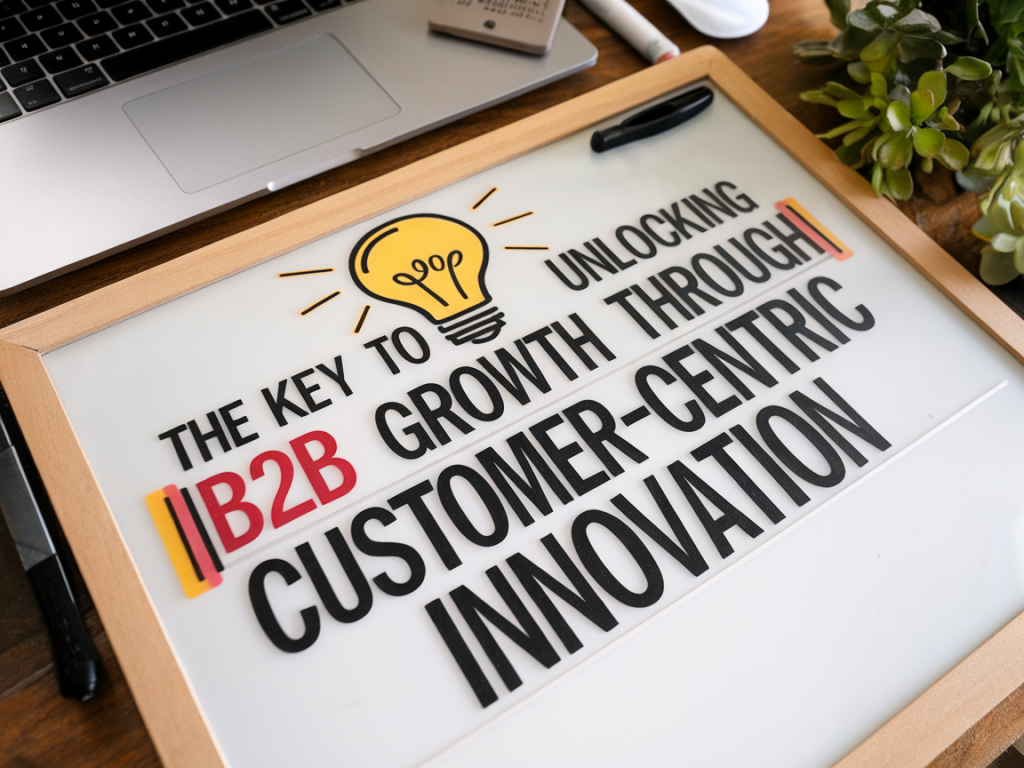
In the competitive universe of B2B, growth often feels like a puzzle with ever-changing pieces. Through my journey of entrepreneurship and collaboration with industry leaders, one thing has become crystal clear: the most successful companies don’t just sell—they solve. At the heart of this lies a principle that drives meaningful and long-lasting growth: customer-centric innovation.
What is Customer-Centric Innovation?
Customer-centric innovation is more than a buzzword—it’s a philosophy. It’s the practice of shaping your products, services, or processes around the needs, behaviors, and desires of your customers. This means not just creating solutions for problems they have today but also anticipating the challenges they’ll face tomorrow.
Think about brands like Salesforce and HubSpot, pioneers in customer relationship management and inbound marketing respectively. Their meteoric growth wasn’t just a stroke of luck—it resulted from deeply understanding their target audience and crafting solutions that simplify and amplify their work processes. Customer-centric innovation is the recipe for their success, and it can be yours too.
Why Does Customer-Centricity Matter in B2B?
It’s tempting to believe that in B2B, decisions are made purely on logic, systems, or cost savings. But let’s not overlook the truth: people drive businesses. Behind every transaction or partnership is a decision-maker with unique needs, goals, and frustrations. Serving them in ways that truly resonate not only makes your company indispensable but also strengthens loyalty and trust—two commodities that are hard to come by in the crowded B2B marketplace.
For example, I recently spoke to a SaaS startup founder whose company provides project management software to mid-sized enterprises. Initially, their platform mimicked others in the market—sleek design, all the standard features. But they struggled to scale. After conducting in-depth surveys with their customers, they discovered that advanced team collaboration tools were the most sought-after feature. By redesigning their solution to meet these specific needs, they tapped into a new wave of demand and saw monthly revenue double in six months. This is the power of aligning innovation with the voice of the customer.
How to Build a Strategy for Customer-Centric Growth
So, how do you shift your approach to prioritize customer-centric innovation? Here’s the roadmap I’ve followed and seen work for businesses of all sizes:
- Start with Empathy: Take a step back and immerse yourself in the customer’s world. Explore their pain points, workflows, and expectations. Use tools like surveys, interviews, or even journey mapping to build a clear picture of their reality.
- Leverage Technology: Advanced analytics, AI, and CRM platforms can help identify trends and predict customer needs before they even ask for solutions. Companies like Adobe and Amazon excel in using customer data as a foundation for innovation.
- Build Cross-Functional Teams: While your R&D or product development team plays a big role, true customer-centricity requires input from marketing, sales, and customer success teams. After all, they interact with your clients the most and can offer golden insights.
- Treat Feedback as Fuel: The best innovations are often born from customer complaints or suggestions. Actively gather feedback—and act on it. Platforms like Intercom make it easier to streamline customer communications and close the feedback loop.
- Make Experimentation a Habit: Innovation requires a willingness to try, fail, and iterate. Don’t hesitate to experiment with prototypes, pilot programs, or new pricing models.
Real-Life Application: Success Stories
Let’s look at some companies that have harnessed customer-centric innovation to unlock tremendous B2B growth:
- Slack: When Stewart Butterfield and his team first developed Slack, they weren’t setting out to create the world’s most popular B2B messaging platform. Initially, it was an internal tool. But by paying close attention to how companies communicated and the frustrations with existing email workflows, they perfected a product that now boasts millions of daily active users worldwide.
- Shopify Plus: Shopify noticed that their smaller e-commerce clientele eventually outgrew their basic product. Instead of losing these high-revenue customers, they introduced Shopify Plus, a tailored solution for enterprise-scale businesses. By building a product that catered to their unique, high-volume needs, Shopify not only retained its existing customers but also attracted an entirely new segment.
The Role of Agility in Customer-Centric Innovation
No matter how much research or effort you put into aligning with your customers, there’s one aspect that remains critical: agility. Market conditions shift, industries evolve, and so do the expectations of your client base. Technology is growing at an unprecedented pace, which means that solutions from five years ago might already be outdated.
One advantage agile businesses have is the ability to pivot quickly. Take the example of Zoom, which wasn’t primarily designed for mass-scale virtual meetings. When the pandemic struck, the company acted quickly to tailor its platform for enterprise customers adapting to remote work, rolling out enhanced security features and integrations with collaboration tools like Slack. This agility secured its dominance during a time of unprecedented demand.
How Can You Start Today?
If you’re just starting or looking to level up your approach, here are a few pragmatic steps you can implement immediately:
- Conduct a Listening Audit: Gather insights from customer calls, social media, and support tickets. What recurring needs or frustrations do you see?
- Involve Customers Early: If you’re developing a new product or service, invite a handful of customers to help co-create or beta-test it. Their perspective will be invaluable.
- Share Insights Across Teams: Break down the silos between departments. For instance, your marketing team might uncover trends that could inspire your next product iteration.
At the end of the day, customer-centric innovation isn’t just a method; it’s a mindset that requires commitment and constant refinement. But trust me—it’s worth it. When you put your customers at the core of your innovation strategy, you’re not just solving their problems; you’re creating opportunities for unstoppable growth—for them and for your business. And isn’t that the true key to success in the B2B world?

